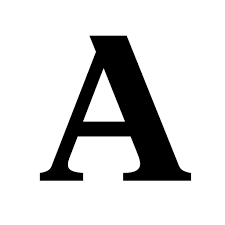Alterations From the Anti-World. The Fly by George Langelaan and David Cronenberg
DOI:
https://doi.org/10.24310/Trasvasestlc.vi2.9090Keywords:
film adaptation, George Langelaan, David Cronenberg, New Flesh, Technology, Body HorrorAbstract
Many fans of cinematic terror consider The Fly (1986) as the most influential film in David Cronenberg's filmography. However, the script was adapted from a story written by journalist George Langelaan in 1957, essentially different in form and substance from the film story. Our intention in this article will be to explain the reasons for these alterations, especially relying on the complex figure of the adapter: David Cronenberg. In this way we will begin a journey towards the main artistic concerns of the Canadian creator, for whom postmodern man, in his desire to achieve perfect evolution, could be doomed both to the destruction of his spirit and the deformation of his body.
Downloads
Metrics
Publication Facts
Reviewer profiles N/A
Author statements
Indexed in
-
—
- Academic society
- N/A
- Publisher
- Universidad de Málaga
References
CARROL, Jordan (2015), «Reading Playboy for the Science Fiction. Reading Playboy for the Science Fiction», American literature: A journal of literary history, criticism and bibliography, 87/2, págs. 331-358.
FREUD, Sigmund (1980), Obras Completas. XXIII. Moisés y la religión monoteísta. Esquema del psicoanálisis y otras obras (1937-1939), Buenos Aires, Amorrortu.
HIGUERAS, Rubén (2016), Mad doctors. El sueño de la razón, Madrid, T&B.
NAVARRO, Antonio José (1992), «David Cronenberg: los secretos de la Nueva Carne», Dirigido por, 203, págs. 50-70.
PALACIOS, Jesús (2013), «Extremos orientales», en A. Sala (coord.), Takashi Miike. La provocación que llegó de oriente, Madrid, Calamar, págs. 33-43.
SALA, Ángel (2003), «Manifestaciones semánticas de lo siniestro en Cronenberg y otros profetas de La Nueva Carne», en C. Lozano (coord.), Lo siniestro: III Curso de Cine y Literatura, Burgos, Universidad, págs. 75-90.
TODOROV, Tzvetan (2003), Introducción a la literatura fantástica, México D.F., Coyoacán.
Downloads
Published
How to Cite
Issue
Section
License
All authors published in this journal accept the following copyright terms:
a. Authors retain their authors´ rights (copyright) and grant First Publication Rights to the journal, which whill be published under a the Creative Commons Attribution-NonCommercial-ShareAlike 4.0 International (CC BY-NC-SA 4.0) license. All about this license is available in the following link: <http://creativecommons.org/licenses/by-nc-sa/4.0>
b. Authors may separately establish additional agreements for the non-exclusive distribution of the version of the work published in the journal (e.g. including it in an institutional repository, or publishing it in a book) with an acknowledgement of its initial publication in this journal.
c. Authors are allowed and encouraged to disseminate their work electronically (e.g. in institutional repositories or on their own website) as this can lead to productive exchanges, as well as earlier and more extensive citation of published work.
The author is responsible for obtaining permission from the copyright holder when using copyrighted materials.
This electronic journal is published by University of Málaga (UmaEditorial), thus it is necessary to cite the origin of any partial or total reproduction.








22.png)










